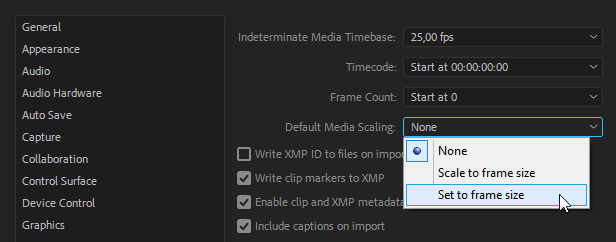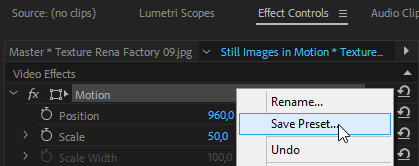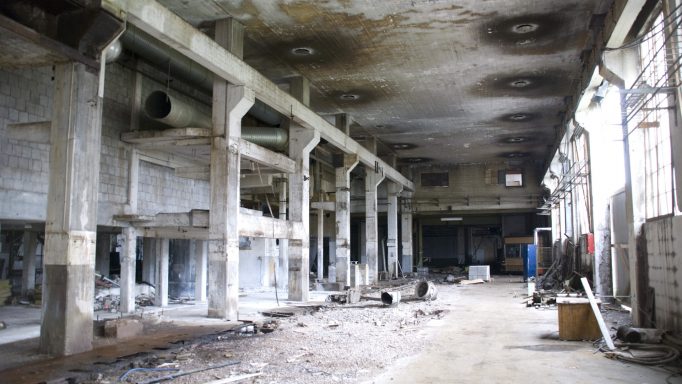How To Change Frame Size In Premiere Pro

TheScale to Frame Size and the Fit to Frame Size features in Premiere Pro sound like they do the same thing, only they don't. Plus, their names are not all that logical, so people tend to misinterpret what they do. I wrote an commodity for the Movie Editing Pro weblog named "The Editor's Guide To Working With Still Images In Premiere Pro" where this was but one of many topics. You tin read the whole article on their web pages. Here's an excerpt from the article, about Sale/Set to Frame Size.
Scale to Frame Size vs Fit to Frame Size in Premiere Pro
If you desire images and video to always scale to fit inside the size of the sequence, you tin can use one of two methods: Scale to Frame Size or Fit to Frame Size. They can both exist found in the correct-click menu for clips in the timeline, and in the Clip menu, under Video Options.

Scale vs Fit to Frame Size in Premiere Pro
So, what's the deviation?
Scale to Frame Size
The Scale to Frame Size option will resample your image at the size of the sequence. So, if you use this on an image that'south double the width of the sequence, yous end upward with an image that'due south ¼ of the original pixel size, while the Scale will be set to 100%. This is a bang-up way to reduce the strain on the system, but it will dethrone the image if you scale information technology farther.
Ready to Frame Size
The Set to Frame Size option, on the other hand, will not resample the image, but instead gear up Scale in the Event Controls panel to any it needs to exist to fit the prototype inside the frame. In my case, since the image is 3840 px broad, that'south 50% for a sixteen/ix epitome. All the pixels are still intact, which is cracking when you want to scale the image further in the Upshot Controls console, simply yous'll demand more reckoner power.
How to employ them
Calibration to Frame Size is as well available in the bin. Select the clips you lot want to automatically calibration to frame size, and click Clip > Video Options > Calibration to Frame Size . When you put the clips on the timeline, they will automobile-scale.
If yous use this characteristic all the time, you should ready this in your preferences. Click Preferences > Media > Default Media Scaling , and fix information technology to Set to Frame Size. Or employ Scale to Frame Size to reduce the strain on the computer, and think to change it to Gear up to Frame Size for the clips yous want to scale further, before you start scaling them.

Default Scale or Fit to Frame Size
In reality, the Scale/Set to Frame Size options are not as useful as you'd remember. Almost images from a DSLR will not be 16/9 aspect ratio, and then the scaling volition result in letterbox or pillar box looks with black bars.

Black Bars after Scaling or Plumbing equipment to Frame Size
A much better arroyo is to create a Movement preset that scales the images to the desired size, so you don't get any black bars.
Make Scaling Presets
To brand a preset like this, prepare scale to whatever it needs to exist to make full the whole frame. In my case, it was fifty%. Then right-click on the discussion Motility in the Issue Controls console and cull Save Preset . Name it 50% Scale or something like. Next time you lot need to scale 70 images, just select them all in the timeline, and throw this preset on 1 of them. Perfect scaling in less than a 2nd!

Save Preset

Result of scaling with the preset. No black bars!
To larn a lot more nigh working with Still images in Premiere Pro, read my article "The Editor's Guide To Working With Even so Images In Premiere Pro" on the Film Editing Pro web log.
How To Change Frame Size In Premiere Pro,
Source: https://premierepro.net/scale-frame-size-vs-fit-frame-size/
Posted by: watersfrilyin.blogspot.com


0 Response to "How To Change Frame Size In Premiere Pro"
Post a Comment